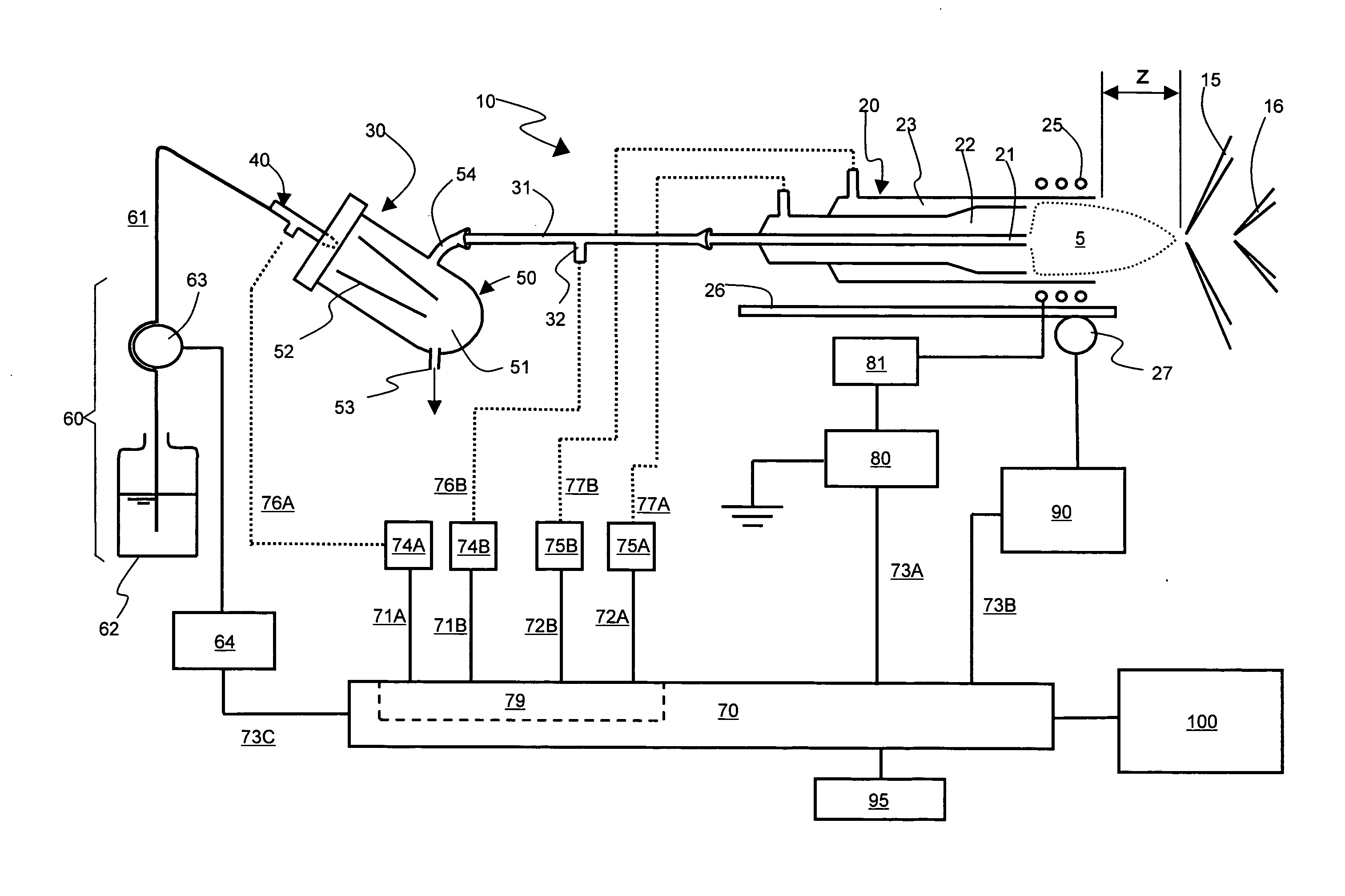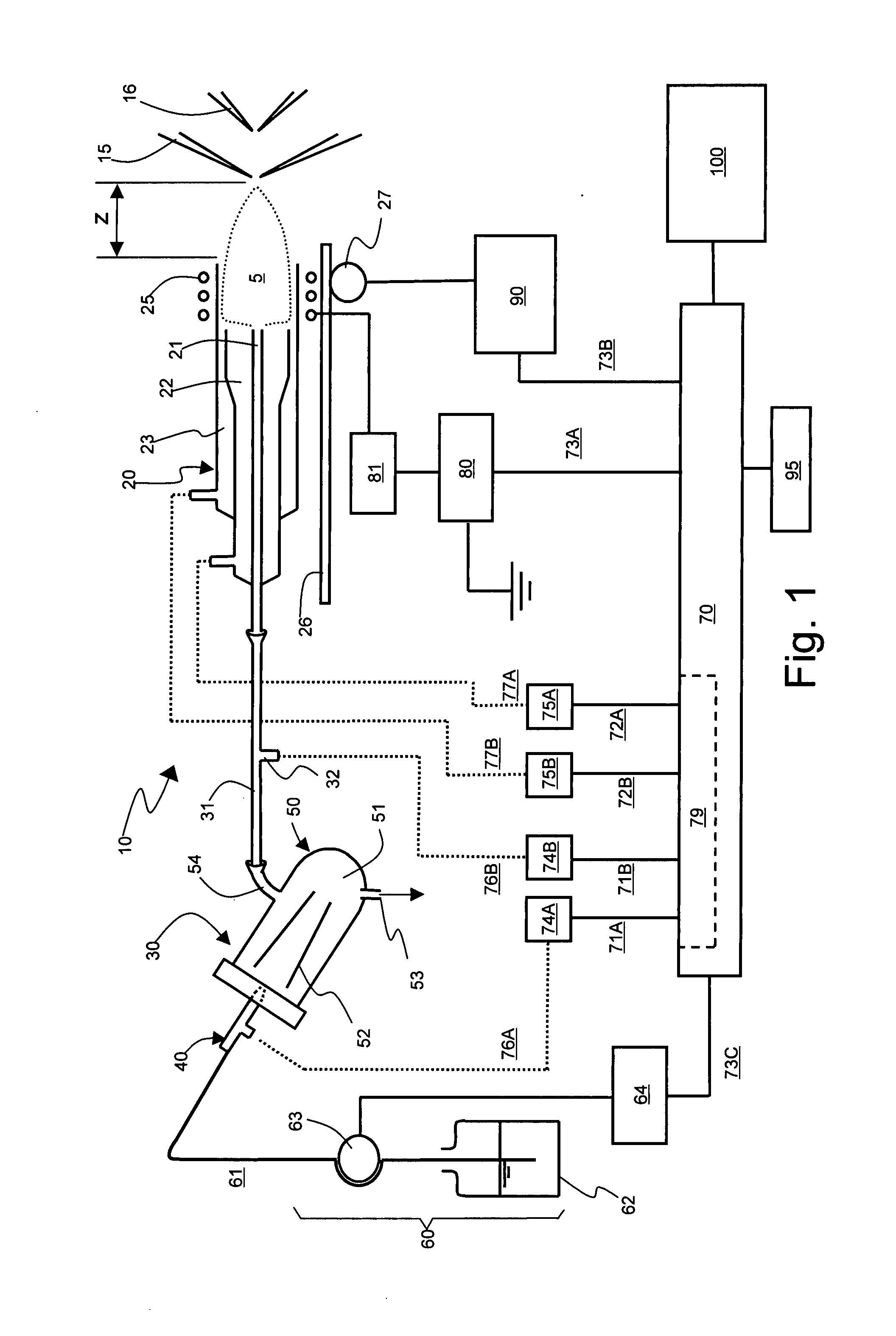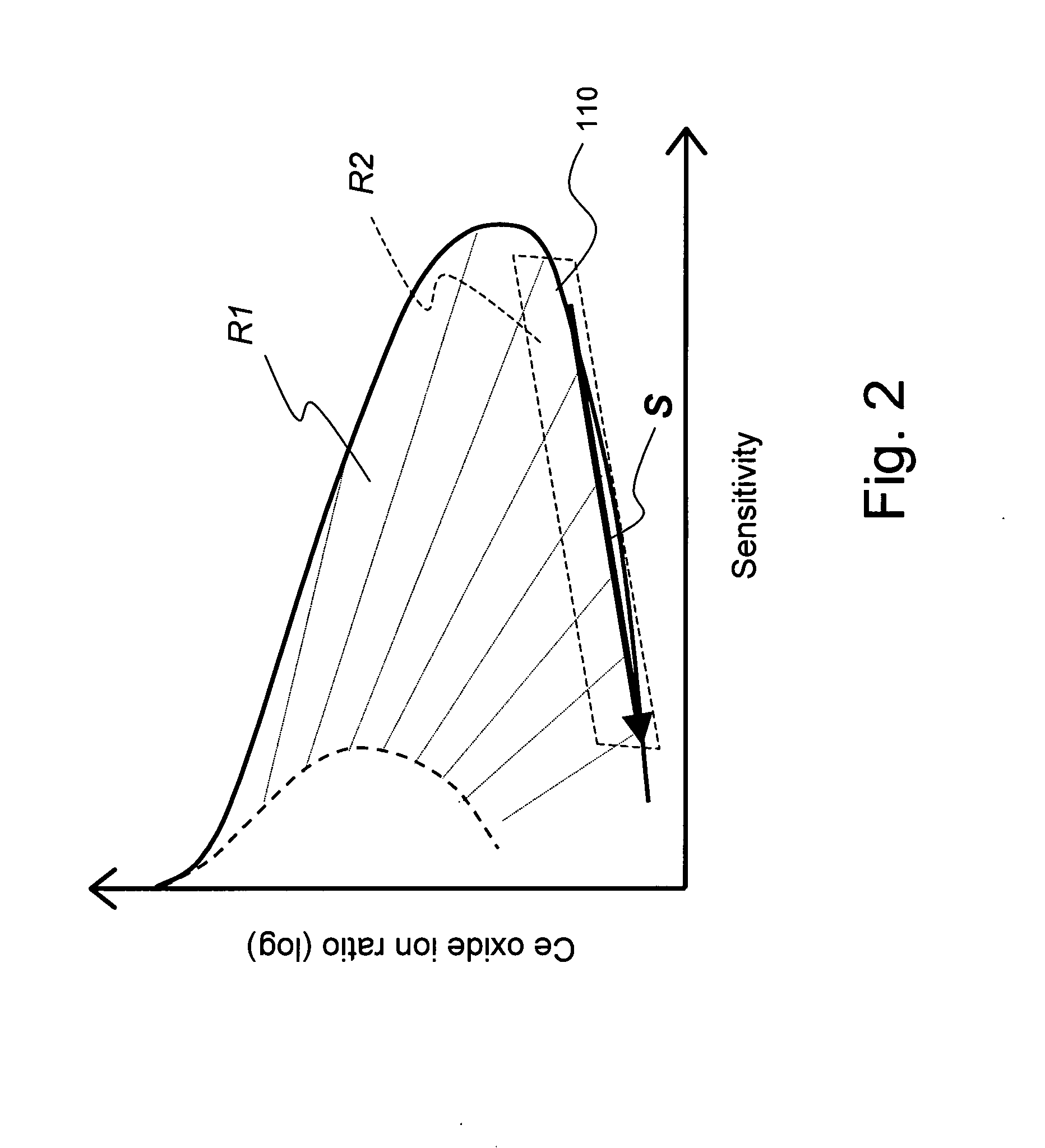Inductively coupled plasma mass spectrometer
a mass spectrometer and inductively coupled technology, applied in the field of technology, can solve the problems of difficult normal mode analysis of samples, difficult to adjust the amount of ions, and difficult to analyze samples, and achieve the effects of easy adjustment of ions, easy analysis of high-matrix samples, and good precision
- Summary
- Abstract
- Description
- Claims
- Application Information
AI Technical Summary
Benefits of technology
Problems solved by technology
Method used
Image
Examples
Embodiment Construction
[0031]The inductively coupled plasma mass spectrometer of a preferred embodiment of the present disclosure will now be described in further detail while referring to the attached drawings. FIG. 1 is a drawing showing primarily the plasma-generating part of the body of the inductively coupled plasma mass spectrometer of the present disclosure. It also shows the structure of the control system in combination with each element. It should be noted that the term “dilution” in the description of the mode of operation of the present disclosure includes all means by which the amount of sample ions that pass through the interface part can be reduced, and in places other than the description of the prior art, also refers to so-called “dry” dilution by which a liquid is not used.
[0032]As previously described, this type of inductively coupled plasma mass spectrometer comprises a mass-analyzing part at the last step of the plasma generating part. FIG. 1 shows only a sampling cone 15 and a skimme...
PUM
 Login to View More
Login to View More Abstract
Description
Claims
Application Information
 Login to View More
Login to View More - R&D
- Intellectual Property
- Life Sciences
- Materials
- Tech Scout
- Unparalleled Data Quality
- Higher Quality Content
- 60% Fewer Hallucinations
Browse by: Latest US Patents, China's latest patents, Technical Efficacy Thesaurus, Application Domain, Technology Topic, Popular Technical Reports.
© 2025 PatSnap. All rights reserved.Legal|Privacy policy|Modern Slavery Act Transparency Statement|Sitemap|About US| Contact US: help@patsnap.com



